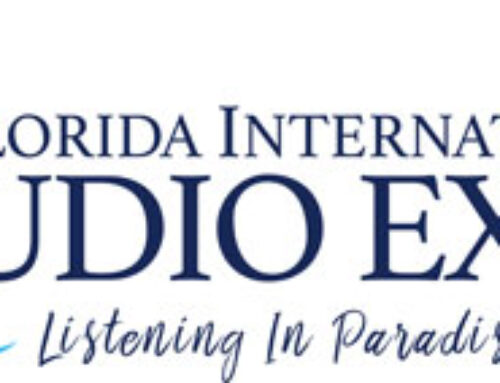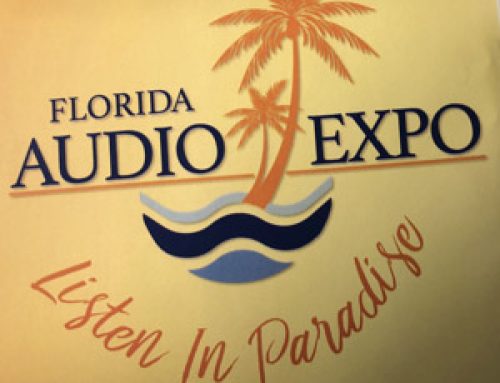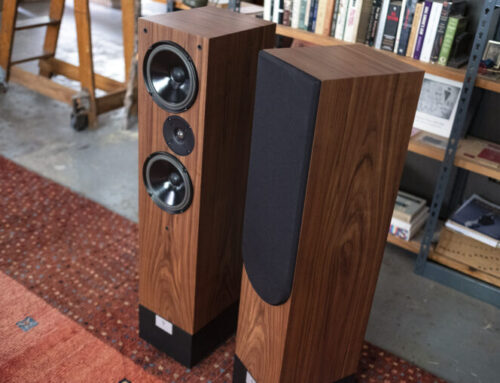Jason Kennedy brought his Jeep and night-vision glasses, but in fact this month’s
Border Patrol is a stunning new power supply for amps of the valve’d variety.
 You don’t know it yet, but your valve amp sounds a mess! Strong-stuff, perhaps, but once you hear your amp with a Border Patrol supply in tow, I think you’ll agree with me. The item in question is a valve-rectified, choke-input-filter power supply, which can be used to replace the HT (high tension) supply in virtually any tube power amp. To double the performance of anything from a Leak Stereo 20 to a megabucks single-ended design is a rare achievement, so at Ł595 I think the Border Patrol’s a bargain.
You don’t know it yet, but your valve amp sounds a mess! Strong-stuff, perhaps, but once you hear your amp with a Border Patrol supply in tow, I think you’ll agree with me. The item in question is a valve-rectified, choke-input-filter power supply, which can be used to replace the HT (high tension) supply in virtually any tube power amp. To double the performance of anything from a Leak Stereo 20 to a megabucks single-ended design is a rare achievement, so at Ł595 I think the Border Patrol’s a bargain.
The choke input filtering is where the BP differs from the onboard HT supplies in most amps. There are a few valve-rectified designs around, but they tend to be rather expensive; when it comes to choke-input-filtered there are only a few to choose from. Why so few units embodying an apparently effective solution? Because it’s hard to make a choke filter that doesn’t have severe transformer buzz. Gary Dews, Border Patrol’s creator, has overcome that issue and the result is pretty spectacular.
In order for your amp to feel the Border Patrol effect, Gary or one of his dealers must solder into it a flying lead, which plugs into the back of the supply. This lead carries the HT supply, obviously, but also control signals for an ingenious relay attached to the amp’s heater supply. This allows Border Patrol to turn itself on and off in tandem with your power amp, so you never need to touch the black box itself. This is an immensely convenient feature, but more importantly stops you from destroying the amp if you accidentally leave the HT on with the L.T. (low tension) heater supply off.
Gary demonstrated the Border Patrol with amps including the aforementioned Leak, an Audio Innovations Series 800, and my own Marantz 8B. Previously I’ve heard its effect on an Audio Innovations First Audio, not to mention the BP’ed units powering the Living Voice Air Scouts I wrote about in issue 163.
That Patrol Emotion
In every instance the Border Patrol effect was nothing short of a transformation. Bass solidified, imaging became significantly more three-dimensional and substantial, and the power-supplied amp made the regular version sound, quite literally, a mess. And don’t forget this is with amps that are by no means shabby; these are units I have used extensively and found to be very effective. Now I couldn’t tolerate them in their standard all-too-valvey guise.
Perhaps because I haven’t lived with a tube amp for several years, I have become critical of the genre’s shortcomings compared to transistors- particularly the soft bass and rather hazy, ill-defined imagery. Tubes still offer beautifully fluid mid-bands and fine dynamics, but I came to be dissatisfied in all but a small number of cases with the thermionic lack of grunt. The BP removes these limitations. Tube bass now has power and depth, high frequencies shine and sparkle with seamless definition, and the overall presentation is more dynamic.
For the purposes of his demo, Gary powered up an Audio Innovations L1 pre-amp and Series 800 power-amp with the BP supply already attached. It sounded pretty good after the tranny gear I had been listening to. Then he took off the supply and caused an alarming loss of definition across the band. Cymbals became fizzy and the structure of the music fell to pieces. With the Border Patrol back on the music regained its composure: instruments not only sounded more natural and realistic, but seemed much more musically coherent. In many respects it was like taking the good things about transistor amps and adding them to the natural strengths of valves- a remarkable blend.
Small is Beautiful
The Border Patrol effect, in the breadth of its applications, reminds me of Trichord’s Clock 2 CD player modification, which also breathed new life into a wide variety of products. It’s interesting how these little companies are devising enhancements that make the most of bigger players’ designs, yet a big company often has limited room for manoeuvre because of self-inflicted corporate constraints or rigid commercial practice.
But neither the Clock 2 nor the Border Patrol would cost a great deal more if instigated at the manufacturing stage. For example Pioneer’s new PD-S505 Precision CD player (to be reviewed next month) has a variation on the Clock theme on board, which with a variety of other mods adds 260 to the price of the standard machine.
So how many years will it be before a tube-enhanced brand incorporates one of Gary’s supplies into a power amp? I suspect it may be only a matter of months when people hear what it can do.




Leave A Comment